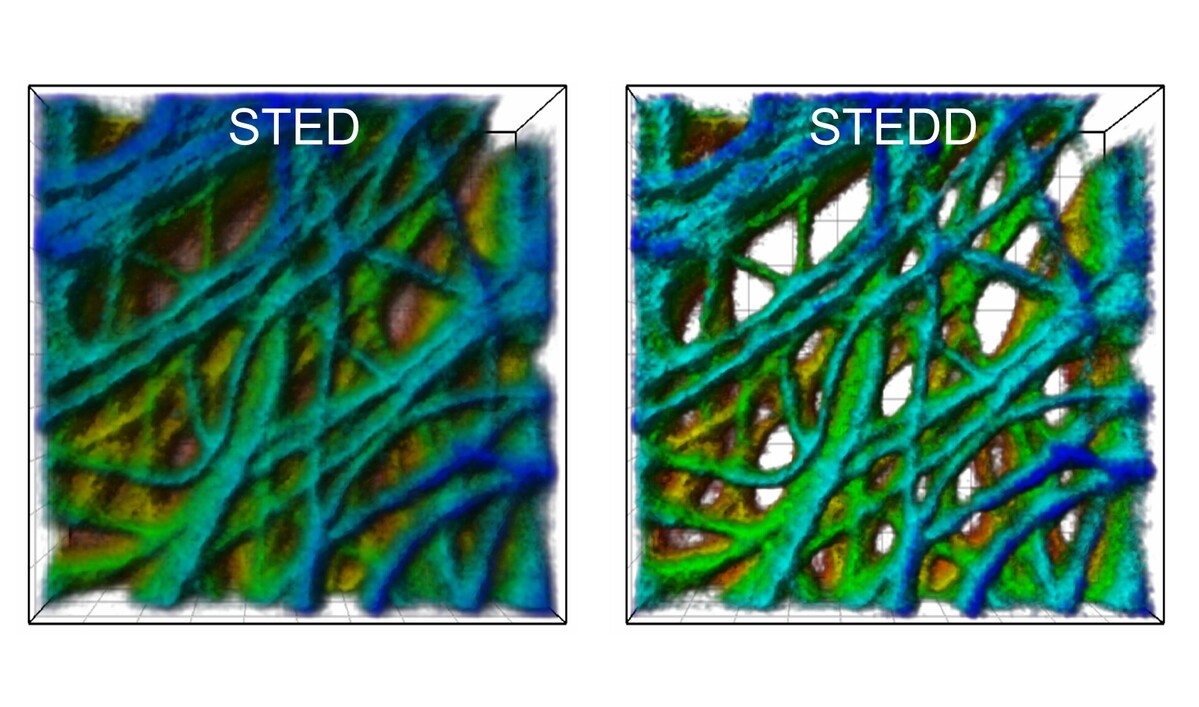Background Suppression for Super-resolution Light Microscopy
Researchers of Karlsruhe Institute of Technology (KIT) have developed a new fluorescence microscopy method: STEDD (Stimulation Emission Double Depletion) nanoscopy produces images of highest resolution with suppressed background. The new method yields an enhanced image quality, which is advantageous when analyzing three-dimensional, densely arranged subcellular structures. STEDD, a further development of the STED method, is now presented in Nature Photonics (DOI: 10.1038/NPHOTON.2016.279).
Optical microscopy is applied widely in the life sciences sector. Among others, it is used to minimally invasively examine living cells. Resolution of conventional light microscopy, however, is limited to half the wavelength of light, i.e. about 200 nm, such that finest cellular structures are blurred in the image. In the past years, various nanoscopy methods were developed which overcome the diffraction limit and produce images of highest resolution. Stefan W. Hell, Eric Betzig, and William Moerner were granted the Nobel Prize in Chemistry for their nanoscopy methods in 2014.
Now, researchers of KIT have refined the STED (Simulated Emission Depletion) nanoscopy method developed by Hell by modifying image acquisition in a way that background is suppressed efficiently. The resulting enhanced image quality is particularly advantageous for quantitative data analysis of three-dimensional, densely arranged molecules and cell structures. The new nanoscopy method named STEDD (Stimulated Emission Double Depletion) developed by the team of Professor Gerd Ulrich Nienhaus of KIT’s Institute of Applied Physics (APH) and Institute of Nanotechnology (INT) is presented in Nature Photonics.
For detailed information see Press Release 012/2017.
or, 31.01.2017

